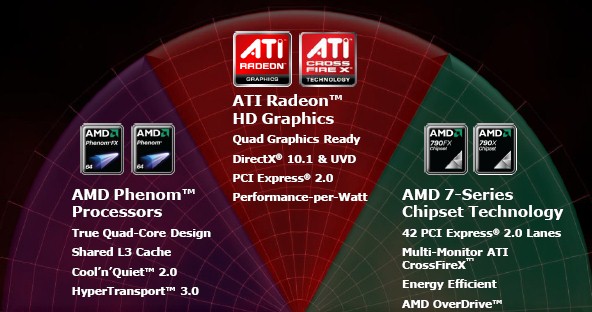
Today, AMD has officially announced its new platform for desktop PCs codenamed AMD Spider. Last week, we already covered the theoretical and practical capabilities of one of the key components of this platform – video cards - in AMD Radeon HD 3800 Series. Tests of the "low-end" HD3850. At last, it's high time we unveil the shroud of secrecy from the remaining components of the Spider platform – processors of the AMD Phenom line and AMD 7-Series family chipsets.
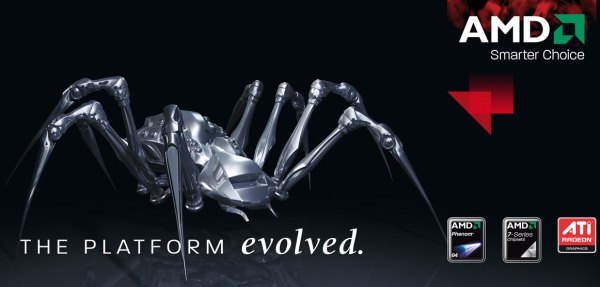
Our report of AMD's new components for desktop PCs will be divided into two logical parts. The thing is, last week AMD held a special conference in Warsaw as part of the presentation of the Spider platform, where a correspondent of 3DNews was present. So today we'll be talking about the theoretical part only – general specifications of the new platform, details of the architecture of new components, declared performance, and prices. Some time later, we'll publish another material that includes an "outside broadcast", as well as results of the first practical tests of the AMD Spider platform. We'll present extended tests some time later once all the components of AMD Spider are at the disposal of the 3DNews test lab.
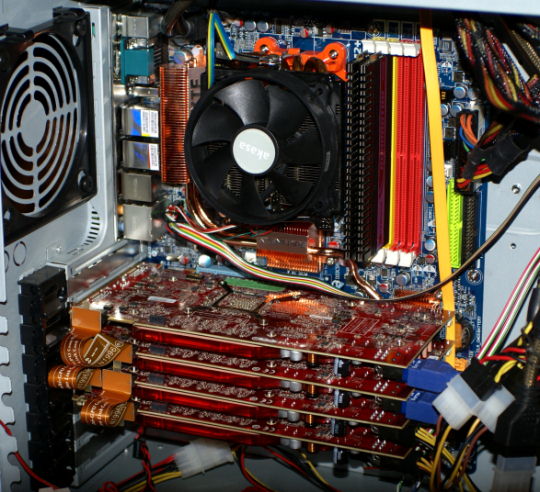
AMD Spider: general specifications
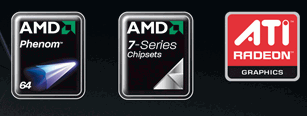 While presenting new technologies to the wide audience, AMD is focusing solely on the platform-specific nature of the innovations. The key component of the Spider platform are multi-core AMD Phenom processors (up to 4-core) manufactured following the 65-nm process technologies and are aimed at operation with Socket AM2+motherboards. Along with these, the Spider platform includes a new generation of AMD 7 Series chipsets for building motherboards with support for CrossFireX and AMD OverDrive technologies, as well as graphics of the ATI Radeon HD 3800 family with support for Microsoft DirectX 10.1.
While presenting new technologies to the wide audience, AMD is focusing solely on the platform-specific nature of the innovations. The key component of the Spider platform are multi-core AMD Phenom processors (up to 4-core) manufactured following the 65-nm process technologies and are aimed at operation with Socket AM2+motherboards. Along with these, the Spider platform includes a new generation of AMD 7 Series chipsets for building motherboards with support for CrossFireX and AMD OverDrive technologies, as well as graphics of the ATI Radeon HD 3800 family with support for Microsoft DirectX 10.1.
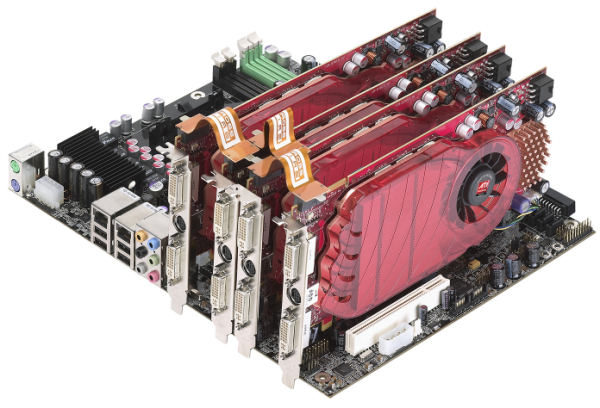
If we discard the verbosity of press releases, the major innovation implemented in the AMD Spider platform is the considerable reduction on the "performance per watt" parameter mainly due to the power-saving 65-nm design of AMD Phenom processors, 65-nm of AMD 7-Series chipsets, and 55-nm graphic chips of the ATI Radeon HD 3800 family. Along with that, AMD Spider offers support for a number of specific power-saving technologies: ATI PowerPlay, Cool’n’Quiet 2.0, Microsoft DirectX 10.1, HyperTransport 3.0, and PCI Express 2.0. In particular, Cool’n’Quiet 2.0 allows reducing the power consumption of AMD Phenom processors of TDP 95 W up to the average 32 W in household and average 29 W in commercial applications. At the same time, the AMD CoolCore technology implemented in AMD 7-Series technologies provides operation of the processor cores at various frequencies and, therefore, reduction of power consumption, with the TDP of the chipsets is about 10-12 W on average.
Another innovation of the AMD Spider platform is its substantial scalability unprecedented for solutions on the base of AMD processors. For instance, motherboards based on AMD 7-Series chipsets, due to the ATI CrossFireX technology and support for 42 PCI Express bus lanes, are able operating three or four ATI Radeon HD 3800 graphic cards.
On the whole, it is assumed that the AMD Spider platform in future will be the basis for most varied AMD LIVE! systems – desktop and portable PCs, home-based servers and family digital entertainment centers, etc. One of the major marketing ideas the AMD Spider platform is promoted is in the full-featured support for HD video.
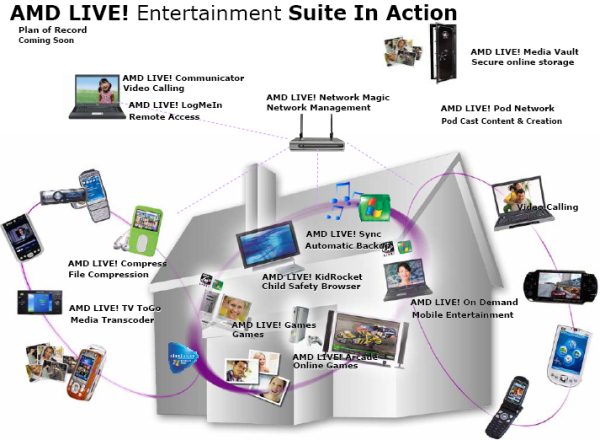
Since we sorted out with the capabilities of ATI Radeon HD 3800 graphics in general last week, today, to get a full idea of the AMD Spider platform, we should look closely at the specifications of new AMD Phenom processors and AMD 7-Series chipsets. Let's go on step by step.
AMD Phenom processors for desktop PCs
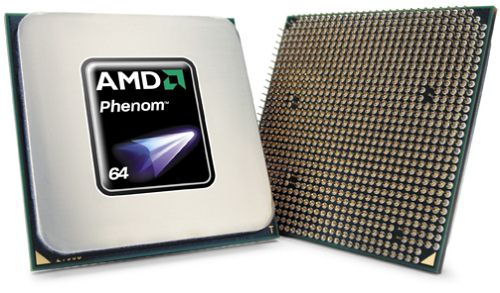
From the architectural viewpoint of AMD processors, new 4-core Phenom chips for desktop PCs made on the base of the Stars architecture (Agena core) are the "closest relatives" to new 4-core AMD Opteron server processors based on the Barcelona core.
In full analogy with the Barcelona core, the Stars architecture offers a 128-bit memory controller with support for up to DDR2-1066, which is also able operating in the 2-channel 64-bit mode for independent memory write/read operations. The physical address space has gone up to 48 bit, with the memory support rose to 256 TB.
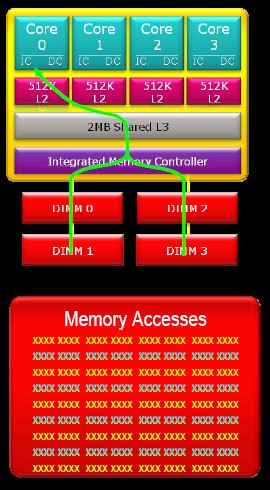
Each of the four cores of the Phenom processor has its own 64 K L1 cache memory for instructions and 64 K L1 memory for data, which in the total makes 512 K L1 memory per processor. The total L2 cache memory size makes 2 MB, i.e. 512 K per each core. Apart from that, the Barcelona and Stars architectures imply availability of 2 MB L3 cache memory. Unlike L1 and L2 cache memory, exclusive for each core, the L3 cache memory is distributed dynamically among all the cores.
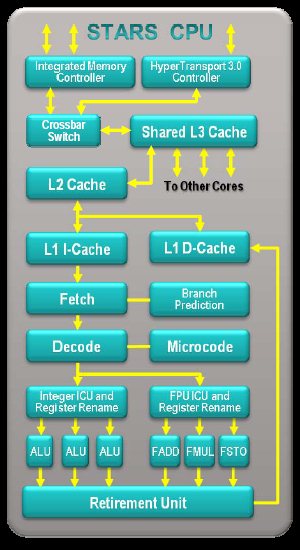
Among the key specifications inherent to the new 4-core Phenom processors, we should mention the following key functional capabilities:
- New floating-point task scheduler which now supports 36 new 128-bit operations
- Support for 128-bit SSE operations that have emerged in addition to the capabilities of the former 64-bit architecture
- Processing two SSE operations and one SSE transition per cycle
- The instruction fetch module buffer has turned 32-byte (used to be 16-byte)
- Branching executable with 512-move prediction of indirect branches
- Data cache performance has been increased from one 64-bit loading per cycle to 128-bit loading per cycle
- Data cache performance of the L2 cache memory performance has been increased from 64-bit loading per cycle to 128-bit loading per cycle
- HyperTransport 3.0 implementation has allowed to increase the bandwidth to 20.8 GB/s
- AMD Virtualization Technology implementation with the Rapid Page Indexing
Besides, we should also mention support for the system of clock speed dynamic control per each core that has emerged in Phenom processors. Since the architecture does not allow adjusting the power supply voltage for each core in the independent mode, additional power supply is provided through reduction of the clock speed for each core in the idle mode.
Along with that, additional power-saving is provided by the AMD CoolCore technology that allows disabling unused functional modules of the core. There is also the Dual Dynamic Power Management technology which allows setting independent voltage levels for the CPU core and the integrated memory controller. The additional AMD Wideband Frequency Control feature provides the most efficient power consumption mode preserving the performance as the performance modes change. Finally, the Multi-Point Thermal Control technology that functions due to thermal sensors integrated into the core allows for thermal protection of the chip through tracking the temperature level and automatic reduction of the performance to reasonable temperature limits.
Among the other power-saving technologies, we should also note the C1E power supply mode which is enabled once all the core chips of the core are switched to the standby mode. In so doing, the HyperTransport bus is disabled, the memory switches to the reduced power consumption mode, with the internal clock speeds of the CPU substantially go down. Of interest is also the Processor Power Saving Indicator feature that reports to the voltage regulator of the load reduction, as well as provides support for voltage regulators with PSI. Along with retention of the inverse compatibility of AMD Phenom processors with VID-control of AM2 boards, the new serial system for VID-control provides 7-bit precision of voltage adjustment (in 12.5 mV increments).
The below screenshot depicts the key differences and similarities of the previous AM2 platform, the newly-born AM2+, and the future AM3.
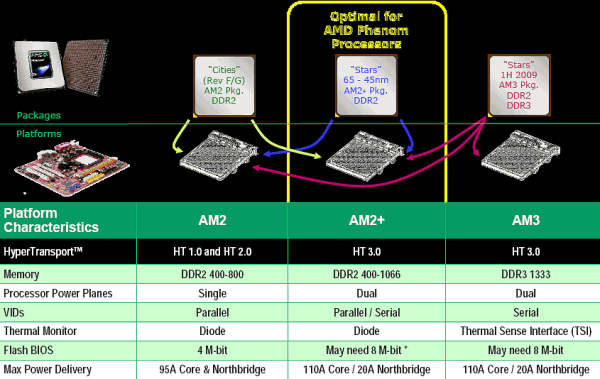
Let's draw a line under this brief specifications of new Phenom processors. All the new chips are manufactured at the AMD Fab 36 in Dresden, Germany, using 65-nm process technology and using the SOI (Silicon on Insulator) technology. Each 4-core processor contains about 463 mln transistors, with the chip area being 285 mm2. All the new Phenom processors are produced in 940-pin Organic micro-PGA (micro Pin Grid Array) packages and can be used with Socket AM2+ motherboards. The nominal supply voltage of the core is 1.1 – 1.25 V, the maximum temperature 70°C; the TDP is rated at 95 W. With its official press release, AMD announced the start of delivery of two Phenom processors. Phenom 9600 (clock speed 2.3 GHz), Phenom 9500 (clock speed 2.2 GHz) are shipped at the price $283 and $251 in wholesale lots starting with 1000 pcs. Judging by the data of the company's presentation, in about early next year there will appear AMD Phenom 9700 which, along with the higher clock speed, will stand out for higher TDP. The below table presents the specifications of all the three chips.
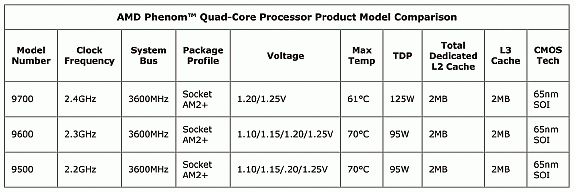
The new Phenom chips are positioned among the other AMD processor lines in the following way:
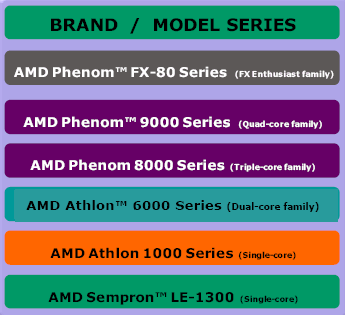
New AMD 7 Series chipsets for desktop PCs
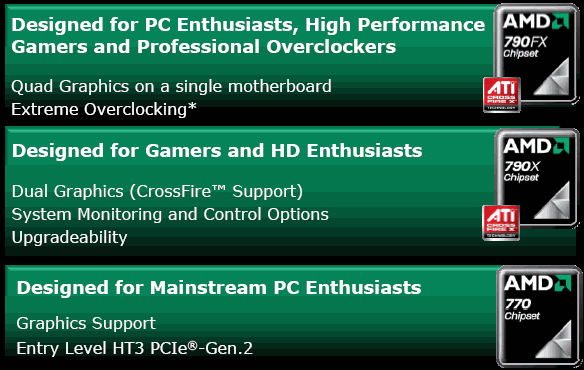
The next component of the new AMD Spider platform is the line of AMD 7 Series chipsets which currently includes the most powerful AMD 790FX version, a version for mass PCs - AMD 790X, as well as the value-sector version AMD 770.
All the three chipsets are made following the 65-nm process technology norms with SOI and, according to the representatives of AMD, offer twice as less power consumption versus the previous generation of AMD chipsets. The TDP for the "higher-end" chipset 790FX is declared at the level 10 W.
For visual experience, we found it more appropriate to gather the key specifications of the three chipsets in one table – this way it is easier to estimate the capabilities and differences of each.
| Chipset | AMD 790FX | AMD 790X | AMD 770 |
| HyperTransport 3.0 | + | + | + |
| Auto Xpress | + | + | - |
| PCI Express Gen. 2.0 | + | + | + |
| Slots for video cards | up to 4 | up to 2 | 1 |
| GPU-Plex Technology | + | + | - |
| Quad PCIE Blocks | + | + | - |
| ATI CrossFireX Technology | + | + | - |
| Backward compatibility | + | + | + |
| AMD OverDrive | + | + | + |
| AMD RAIDXpert | + | + | + |
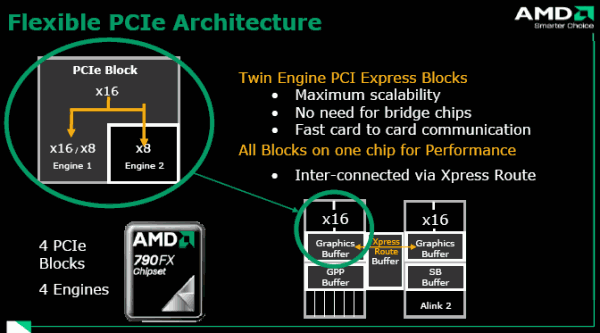
Above all, we note the key innovations and technologies implemented in AMD 7 Series:
- HyperTransport 3.0 – almost doubled performance as compared to HT1 while exchanging data between the CPU and graphics.
- Auto Xpress – a technology for high-quality performance tuning of the PC, which is enabled automatically when using AMD/ATI components and selects the optimum system settings. It also optimizes the graphic performance using AMD processors with HT1, reads the special "overclocking" settings of DIMM DDR2 modules for better memory tuning.
- PCI Express Generation 2.0 – offers the possibility to use the new generation PCI Express bus to increase performance, including that of the graphic subsystem.
- GPU-Plex Technology – a scalable technology for flexible performance tuning in systems with several video cards equipped with 2-core GPUs
- Quad PCIE Blocks – Improved interaction of CPU and GPU to reduce the memory latency and optimize the PCI-E bus bandwidth.
- ATI CrossFireX Technology – gain in performance of the graphic subsystem attained through installation of four video cards in a system.
- Backward compatibility – flexibility in building compatible platforms based on AMD Athlon and AMD Phenom chips
- AMD OverDrive – control over the extended settings of AMD 7-Series chipsets from within Microsoft Windows.
- AMD RAIDXpert – simple remote configuration of the RAID subsystem
The flagship chipset AMD 790FX is aimed at building performance high-end systems based on motherboards for AMD Socket AM2+. The chipset supports 42 PCI Express bus lanes which can be configured in any combination. Undoubtedly, most motherboards based on the 790FX chipset will offer support for the CrossFire configuration with up to four video cards; that is why 32 PCI Express buses will be wired onto PCI Express x16 slots for the graphic, with ten more buses left for the other peripherals.
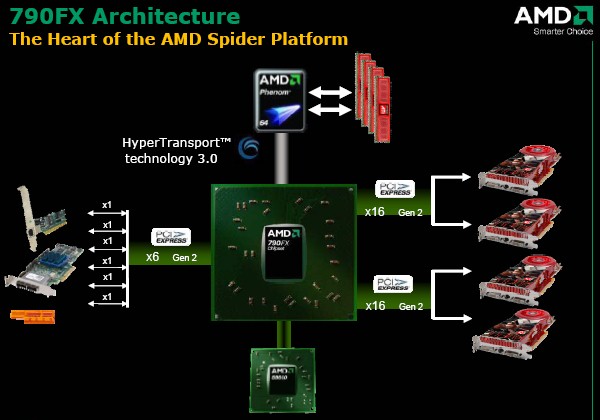
Specifications of the mass AMD 790X chipset are similar enough to the capabilities of the "top-end" 790FX, except that there are fewer PCI Express buses. Therefore, unlike the 790FX which supports three or four video cards, motherboards based on 790X will provide for CrossFire operation in only the traditional mode with two video cards.
The value-sector AMD 770 chipset, in its turn, will offer support for the only video card.
It should be also noted that all the new chipsets will now be equipped with the well-known south bridge ATI SB600, however in the next year we expect a renovation in the form of SB700.
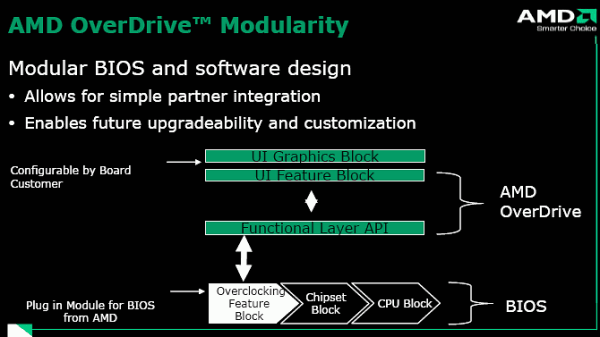
At that, we could finish with the overview of AMD's new chipsets, but for conclusion I'd like to mention a couple of points. First of all, I'd like to show you a pair of screenshots exemplifying the principles of the AMD OverDrive technology. Clearly, all that would be more appropriate for an article devoted to practical tests, but I think you won't mind that.
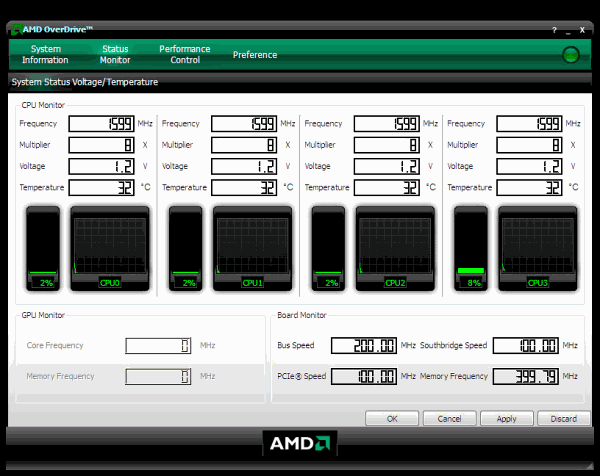
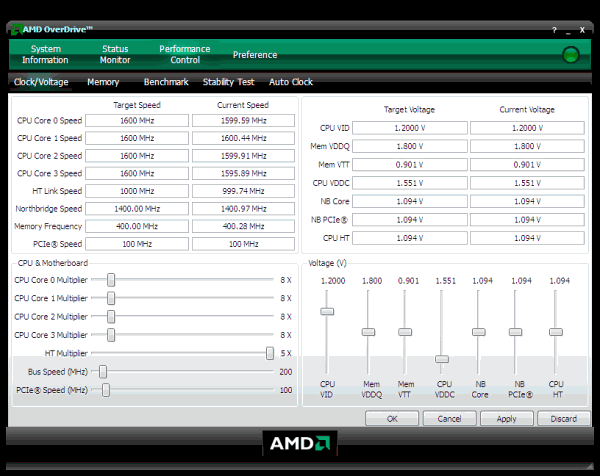
Lastly, the final chord: a screenshot with a list of motherboards for Socket AM2+ which are expected to arrive in the retail in the nearest future.
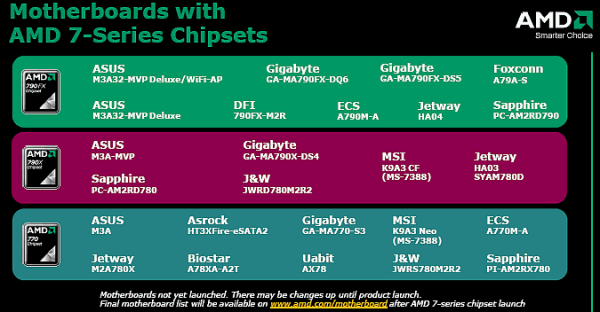
Instead of final words which can't be there after dry theoretical reasoning without tests of a live system, let me point to an interesting fact. The thing is, AMD in its presentations devoted to the announcement of the AMD Spider platform, accentuates its firm intention to start delivery of all the components, including the newly announced processors, before the New Year eve. That is, the company intends to make the most of the Christmas sales.
According to the preliminary data, these plans are realistic enough for the Radeon HD 3800 family graphics. According to other indirect data already covered in our reports, the amount of AMD Phenom processors shipped before the New Year eve may amount to hundreds of thousands. Indeed, if all that goes smoothly as planned and unless the suppliers of motherboard will let us down (they normally keep their promises, provided there is enough quantity of chipsets), and if the tests show acceptable results – we can expect that AMD/ATI produce fanciers are going to have a real long-awaited festive season. Anyway, today I'd rather limit myself with this neutral observation - let's wait for the results of first tests…
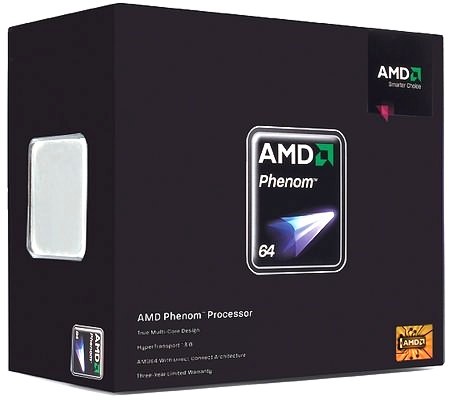
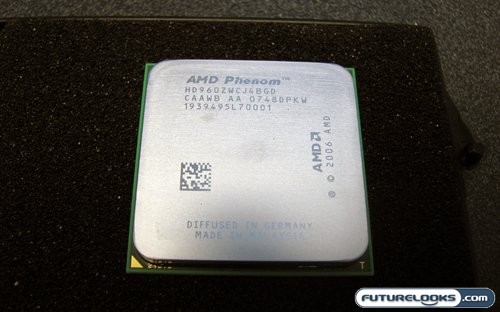




 While presenting new technologies to the wide audience, AMD is focusing solely on the platform-specific nature of the innovations. The key component of the Spider platform are multi-core AMD Phenom processors (up to 4-core) manufactured following the 65-nm process technologies and are aimed at operation with Socket AM2+motherboards. Along with these, the Spider platform includes a new generation of AMD 7 Series chipsets for building motherboards with support for CrossFireX and AMD OverDrive technologies, as well as graphics of the ATI Radeon HD 3800 family with support for Microsoft DirectX 10.1.
While presenting new technologies to the wide audience, AMD is focusing solely on the platform-specific nature of the innovations. The key component of the Spider platform are multi-core AMD Phenom processors (up to 4-core) manufactured following the 65-nm process technologies and are aimed at operation with Socket AM2+motherboards. Along with these, the Spider platform includes a new generation of AMD 7 Series chipsets for building motherboards with support for CrossFireX and AMD OverDrive technologies, as well as graphics of the ATI Radeon HD 3800 family with support for Microsoft DirectX 10.1. 
















